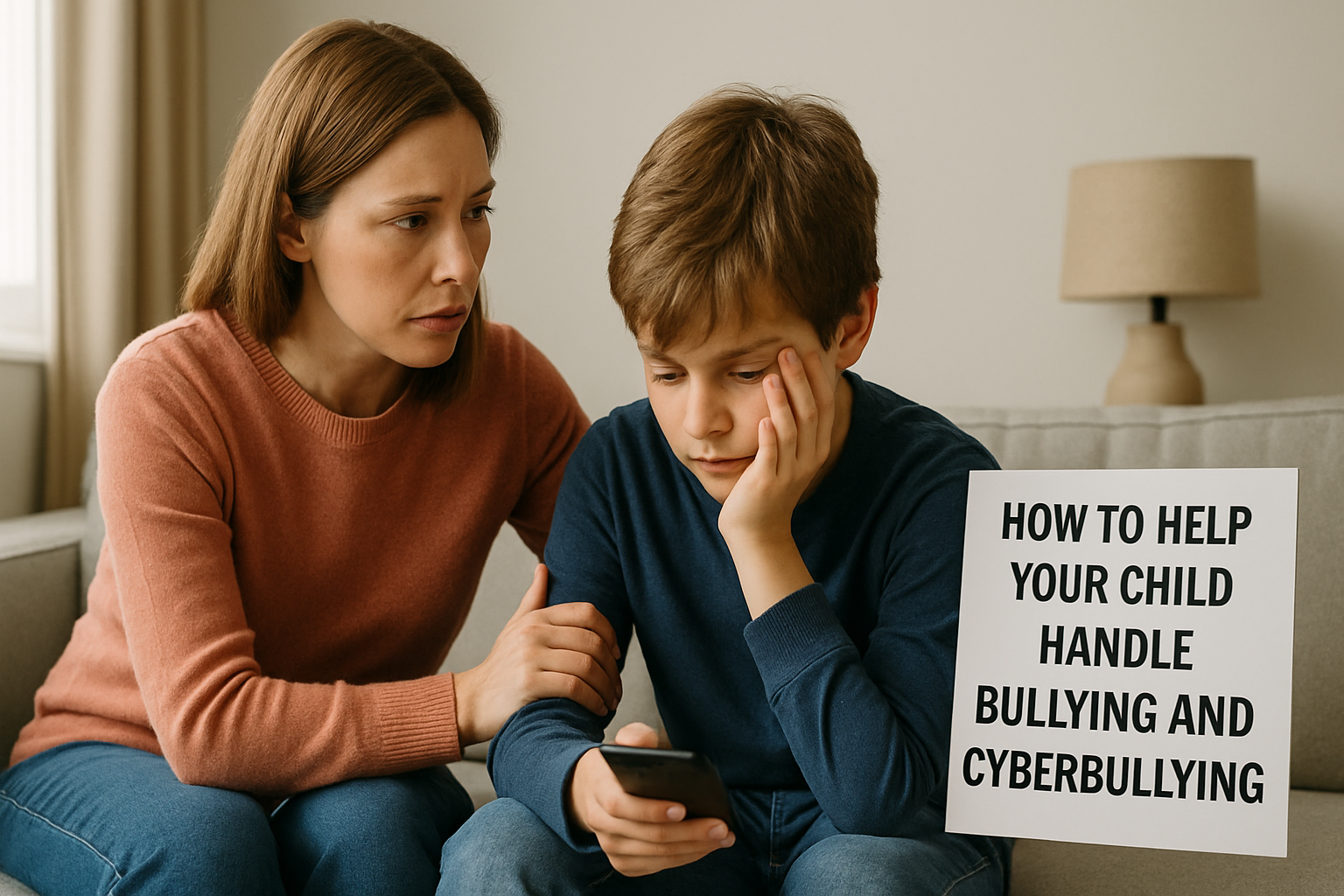Bullying is an unfortunate reality for many children — and in the digital age, it doesn’t stop when they leave school. Whether it’s name-calling in the hallway or mean messages online, bullying can have a lasting emotional impact. But as a parent or caregiver, you can play a powerful role in helping your child handle these situations with strength, confidence, and support.
In this article, you’ll learn how to recognize the signs of bullying and cyberbullying, how to support your child effectively, and how to empower them to respond in healthy ways — all without needing to address complex legal or medical issues.
Understanding Bullying and Cyberbullying
Bullying is repeated, intentional behavior meant to hurt, embarrass, or control another person. It can be physical, verbal, or social.
Cyberbullying happens online — through social media, messaging apps, or gaming platforms — and can include:
- Hurtful messages
- Sharing embarrassing photos
- Exclusion from online groups
- Spreading rumors digitally
Both forms can affect a child’s self-esteem, school performance, and emotional well-being.
Signs Your Child May Be Experiencing Bullying
Children don’t always come forward about bullying. Here are some warning signs:
- Avoiding school or certain activities
- Unexplained physical injuries
- Sudden mood changes or withdrawal
- Loss of interest in hobbies or friends
- Changes in sleep or appetite
- Becoming anxious after using the internet
If you notice any of these signs, don’t ignore them — start a gentle, open conversation.
1. Keep Communication Open and Nonjudgmental
Your child needs to feel safe talking to you. Don’t jump to conclusions or react with anger. Create a space where they feel heard and supported.
Try saying:
- “I’ve noticed you seem upset lately. Want to talk about it?”
- “I’m here to listen. You’re not in trouble.”
- “Whatever it is, we’ll figure it out together.”
When children know they won’t be blamed or shamed, they’re more likely to open up.
2. Stay Calm and Supportive
Your first instinct might be to confront the bully or demand action immediately. But staying calm helps your child feel more secure.
Let them know:
- They are not alone
- It’s not their fault
- They don’t deserve to be treated that way
- You’re on their side, and together you’ll find a solution
Avoid criticizing how they handled things — the goal is to build their confidence, not make them feel worse.
3. Teach Them What Bullying Looks Like
Sometimes children don’t recognize bullying — especially online. Help them understand what it is and that it’s okay to speak up.
Explain:
- Bullying is not “just teasing” if it’s repeated and hurtful
- They don’t have to accept mean behavior to “fit in”
- Online messages can still be harmful, even if “just a joke”
Use examples from media or school situations to make the concept clear.
4. Empower Your Child With Tools to Respond
Give your child practical strategies for dealing with bullying. They don’t have to handle it alone — but knowing how to respond can reduce fear.
Teach them to:
- Stay calm and not react emotionally
- Walk away and seek help
- Use confident body language
- Say something assertive like, “Stop. That’s not okay.”
- Keep evidence of online bullying (screenshots, messages)
Practice these scenarios together at home through role-play.
5. Know When to Involve the School
If bullying happens at school, contact a teacher, counselor, or principal. Share specific details and request support.
What you can do:
- Document incidents (dates, times, what happened)
- Stay calm and respectful in your communication
- Ask about anti-bullying policies and how the school handles reports
- Follow up to make sure steps are being taken
Don’t ask your child to “just ignore it” — schools have a responsibility to help.
6. Address Cyberbullying Proactively
Cyberbullying can happen anywhere online, often when adults aren’t watching. Help your child navigate the digital world safely.
Steps to take:
- Set rules for internet use (times, platforms, privacy)
- Encourage them to block/report bullies online
- Save screenshots of harmful messages
- Teach them not to forward or respond to bullying content
- Consider parental controls or monitoring tools if needed
Most social media platforms allow you to report bullying behavior — use those tools together with your child.
7. Build Your Child’s Resilience and Self-Worth
Bullying can damage self-esteem, so counter it by building your child’s sense of self-worth.
You can:
- Celebrate their strengths and interests
- Get them involved in clubs, sports, or hobbies they enjoy
- Remind them of their values and kindness
- Surround them with supportive people (friends, mentors, relatives)
Confidence doesn’t stop bullying — but it helps kids cope and recover faster.
8. Encourage Empathy and Kindness at Home
Talk about how to treat others — including those who might act out because of their own pain. Empathy doesn’t mean tolerating abuse, but it teaches kids that everyone is human.
Discuss topics like:
- Why some kids bully
- How we can respond with compassion without accepting harm
- Ways to stand up for others safely
Kindness is powerful — and it starts with how we treat others every day.
Helping Kids Reclaim Their Power
Being bullied can make a child feel small, isolated, and powerless. But with your help, they can rediscover their strength. Whether it’s finding their voice, seeking help, or supporting others in need — they can move forward with resilience and courage.
Your role isn’t just to protect your child — it’s to empower them. With your support, understanding, and steady presence, your child can face these challenges and come out stronger on the other side.
